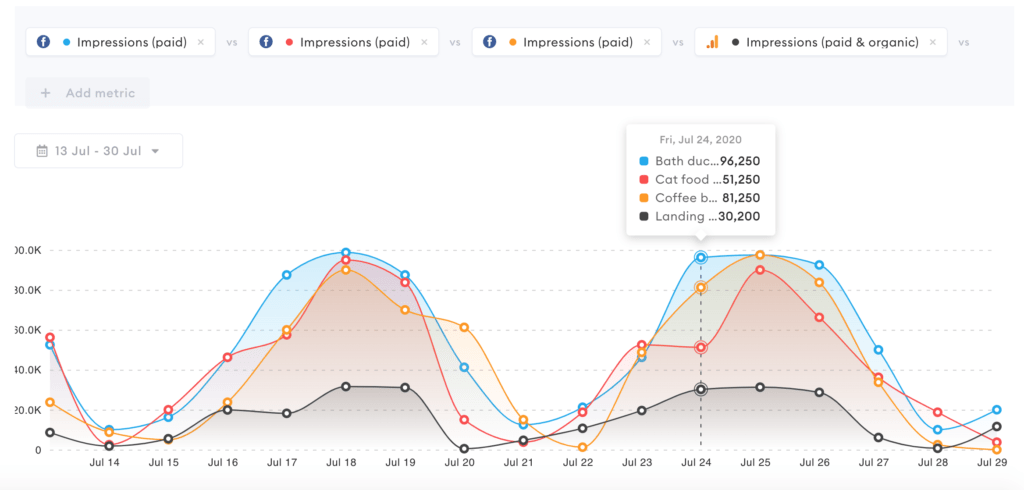An Impression is the metric that shows an approximate estimation of how many times a specific piece of content was displayed on a website, search engine result page (SERP), or social media, regardless if it was clicked or not. In other words, Impressions represent how often your content was loaded in total.
Depending on which platform you use, this metric can have alternative names such as Impression Count (Twitter) and Media Impressions (Instagram).
Note: Reach is related to impressions, but tells you the amount of “unique impressions” you had.
Reasons to track Impressions
Impression monitoring is very crucial in digital marketing, especially for companies that want to build solid brand awareness.
The main purpose of tracking this metric is to measure the visibility of your content. If you want to increase your brand awareness, you need to focus on increasing the number of impressions.
Moreover, by tracking impressions you can get valuable insights about the potential of a specific keyword, ad, or visual that is displayed.
Common variations of Impressions
| Metric Name | Description | Platform |
|---|---|---|
| Organic Impressions | The number of times your unpaid media content was displayed (e.g. in the newsfeed or on SERP). | Linkedin, Facebook, Twitter, Instagram, Google Analytics |
| Paid impressions | The number of times your paid content was displayed. | Linkedin, Facebook, Instagram, Google Ads |
| Impression share | The proportion of actual impressions that the ad obtained in comparison to the estimated number of impressions that this ad could get. Impression Share can be calculated by using this formula:  | Google Ads |
| Top Impression Share | The percentage of the ad impressions that are displayed at the top position in SERP or on the websites. | Google Ads |
| Active View Impression | Impressions that were viewed by a user. The definition of the viewable impression depends a lot on the ad format. (Also known as Active View Measurable Impression or Viewable Impressions.) | Google Ads |
| Unique impressions | The number of people who saw your ad, regardless of how many times they viewed it. (Also known as approximate unique impression.) | Google Ads |
| Average Impressions per User | The calculation of the frequency your content was shown to the same user. It gives insight into how many times the same user saw your content. Calculated by: (Also known as Frequency.) | Google Ads |
How can tracking Impressions help you to become more data-driven?
By tracking the impressions of your ads and content you can start to better understand which platform works better.
It is important to keep an eye on this metric, especially if you aim to establish your brand awareness: the higher the metric is the broader audience reach you will get.
With nexoya you can easily compare organic and paid impressions of your content.
If the number of organic impressions is too low, you need to optimize your content by using relevant SEO techniques.
If the number of paid impressions is too low, you need to reconsider the format, content of your ad, retargeting, or your budget. A/B testing can help you estimate which ad works better.
Download our free ebook to learn the fundamentals of data-drivenness with 17 marketing KPIs!
Additional information about Impressions
- Read about ways of improving your brand awareness with impressions marketing
- How to improve your impression share? Find useful guidelines in this article
- Learn more about useful SEO tactics to increase organic impressions

